Why Upgrade to IBM Power 10
IBM Power Systems offer a unique indispensability in the way companies of all sizes – from large enterprises to small and mid-sized businesses (SMBs) –find it rewarding to upgrade and achieve superb reliability and security.
A migration from one generation of IBM Power to another has the potential to unlock so much value. This guide to IBM Power10 breaks down the key (and most popular) facts and features defining this next leap in IBM technologies.
Upgrading to IBM Power10 (A Facts & Features Guide)
IBM introduced Power10 processors at the Hot Chips conference back in August 2020 and announced the availability of E1080 Enterprise Systems back in September 2021. Meanwhile, Power11 processors are already under development!
Power10 is the first IBM chip to use 7 nanometre (nm) technology as shown by the chart below. An astonishing 18 billion transistors are packaged on a chip not much bigger than a postage stamp, which is nearly three times as many people as there are in the world. Containing hundreds of new patents, Power10 supports up to 240 cores in a single system and offers over a 50% lower carbon footprint for the same work compared to POWER8 and 33% carbon footprint improvement compared to POWER9.
How Has IBM Processor Technology Evolved (a Features Roadmap)
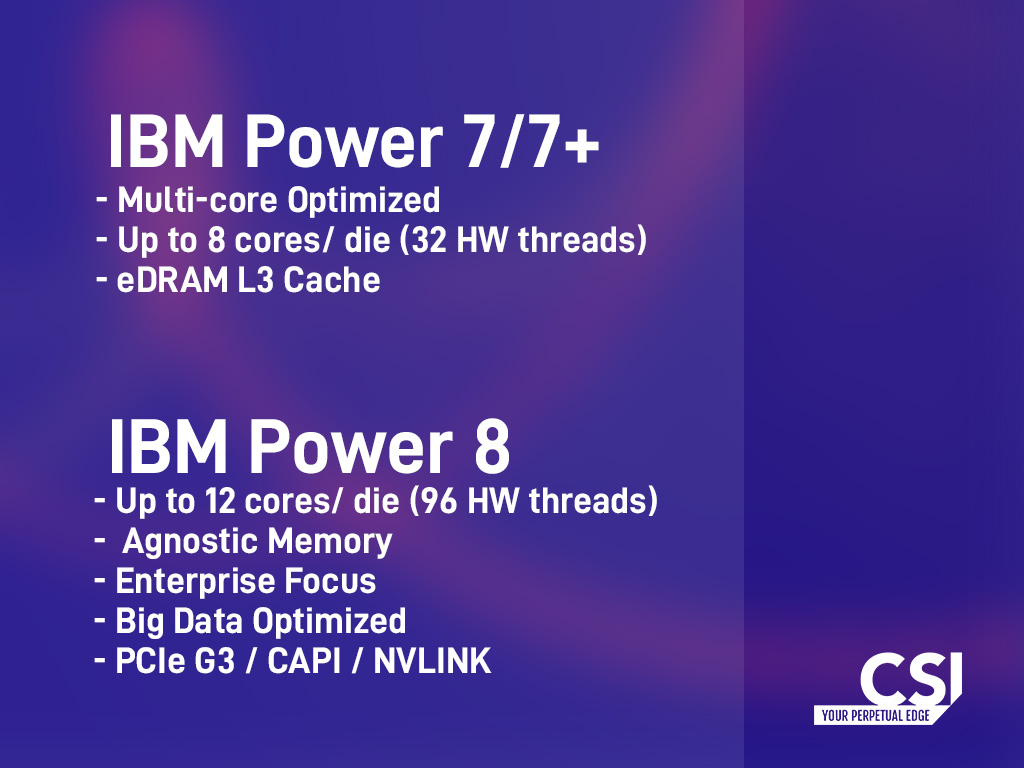
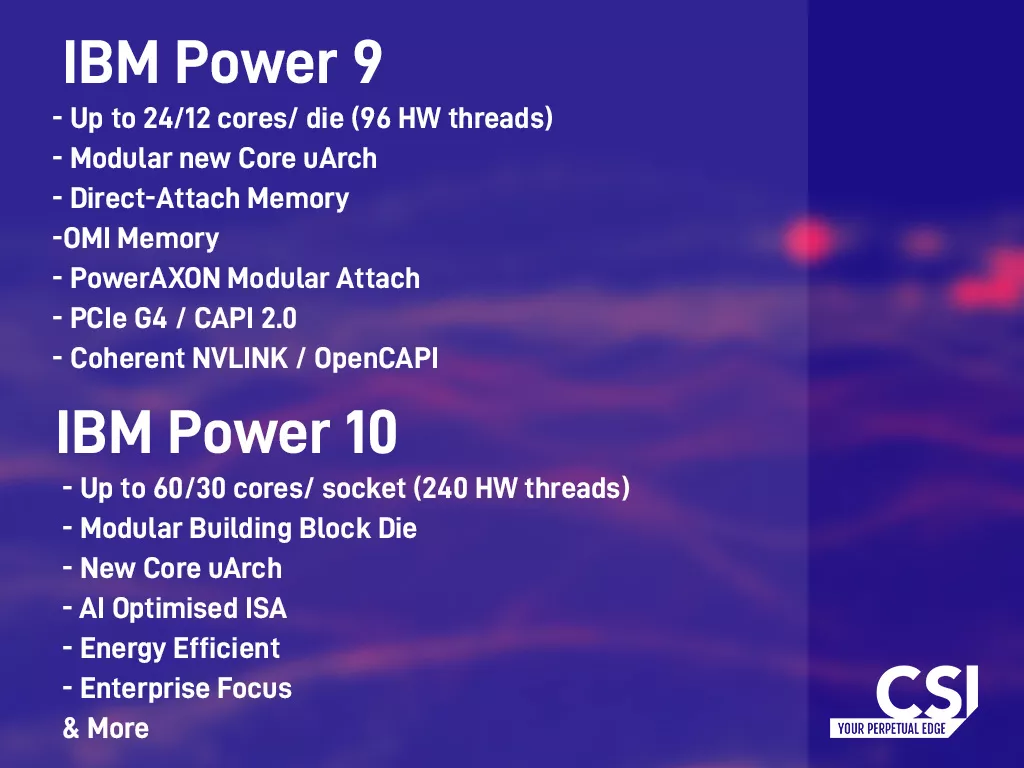
IBM Power10 – Facts & Features
One concept that aligns with IBM Power10 is endless possibility. IBM has created a platform renowned for performance upgrades, advanced security, and more.
IBM Power10 has many features, but in this guide, we have highlighted the key and popular areas below.
1. IBM Power Offers Advanced Security
The new processors have quadrupled the number of crypto engines in every core compared to POWER9, this allows algorithms like AES, SHA2 and SHA3 to run significantly faster (2.5x). IBM will automatically and transparently encrypt all data in main memory for added security. Data at rest (disk and tape) may be encrypted with a very low-performance overhead. For example, AIX LV (Logical Volume) and IBM i ASP’s (Auxiliary Storage Pool).
The crypto engine improvements position Power10 to support upcoming cryptography techniques such as Quantum-safe. Plus, it is superbly positioned to run hybrid cloud environments with end-to-end encryption, lower performance overheads and simplified management.
2. IBM Power10 Spotlights AI
IBM Power10 processors have been improved with a focus on Artificial Intelligence (AI).
A key improvement is a set of four embedded Matrix Math Assist (MMA) units in each core. This allows AI models to execute tensor or matrix computations more efficiently without the need for external accelerators such as GPUs. Compared to POWER9, inferencing performance has improved an impressive 5x to 20x.
This allows inferencing to be performed close to the data, directly on the operational server and infuse the AI capability into business applications. AI model training can be performed anywhere, for example, in the cloud, on IBM Power Systems or x86 systems. This provides the ability to build and train the models on commodity hardware but then deploy on IBM Power E1080 Enterprise Servers close to the data for superior performance.
3. IBM Power10 for Memory
IBM E1080 Enterprise Servers have a new memory architecture called Open Memory Interface (OMI). This offers 2x better memory reliability compared with industry-standard DIMMs for the most critical applications. The memory subsystem has 1.8x higher bandwidth compared to POWER9 with 1,636GB/s bandwidth per drawer. The total memory supported remains unchanged at 16TB per drawer, 64TB for a fully configured system. Memory bandwidth is 2.6x higher than scalable (4+ socket) x86 processor. All memory is encrypted, at all times, without any performance penalty.
An interesting new feature is “Memory Inception” (which will be available in a future announcement). This allows workloads in a cluster of servers to access memory of neighbouring nodes with low latency and high bandwidth. For example, workload A running on system 1 may also utilise memory of systems (nodes) 2 and 3. The workloads run on a single system, but memory can be accessed anywhere. This supports up to 2 petabytes of addressable memory and the potential for 1000s of nodes.
4. IBM Power10 for Performance
IBM E1080 servers can deliver up to 30% more performance per core and over 50% better total capacity at the socket and system level as compared to the previous generation IBM Power E980 server. A two-node box will be more powerful than any POWER8 ever shipped, and per-core performance will be 60-80% more than POWER8. The E1080 system has smashed the world record SAP HANA two-tier benchmark with a rating of 955k SAPS, using 8 sockets and 120 cores. By comparison, Google Cloud needed 16 sockets and 448 cores to achieve 893K SAPS.
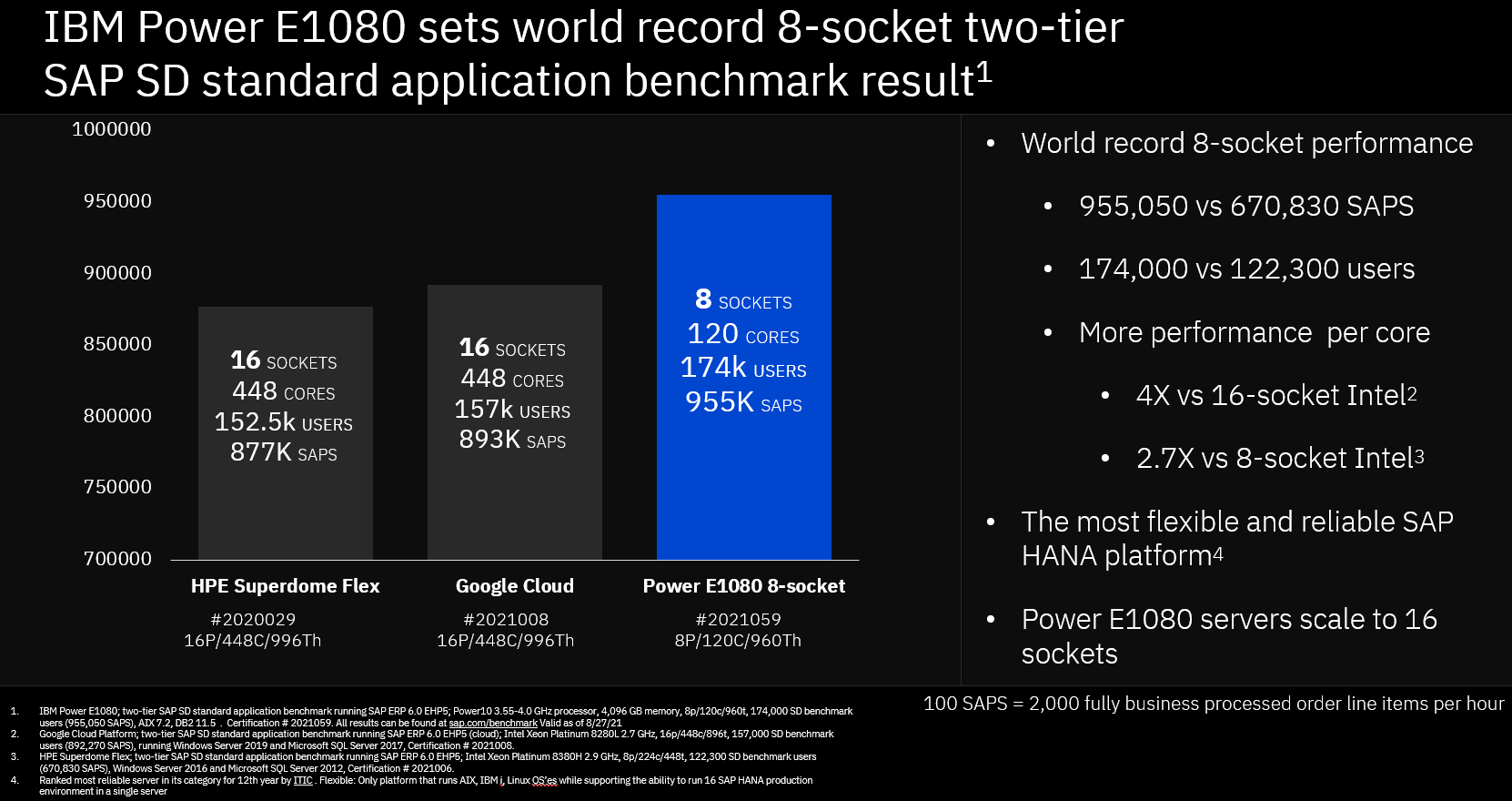
Supported Operating Systems for IBM Power10
IBM AIX
- AIX 7.1 TL5 SP5
- AIX 7.2 TL4 SP1, TL5 SP1
- AIX 7.3 TL0 SP1 (when available)
IBM i
- IBM i 7.3 TR11
- IBM i 7.4 TR5
Linux
- Red Hat Enterprise Linux 8.2, 8.4, 8.6, 9
- SUSE Linux Enterprise Server 12, 15, 16


What Comes After IBM Power10?
Interest in IBM Power10 has grown fiercely over the years, ushering in what many in the media called a “next generation” for the household name. But the rollout of Power10, starting with a ‘scale-out’ has also initiated speculation about IBM Power 11. The odds, according to IBM Expert Stephen Sibley, is favourable toward seeing a Power11 model launch into the market “which will come later in the decade”.
This is important because, with a future lookout as promising as IBMs, the Power platform offers almost a guarantee to remain a reliable, secure and highly performant platform for years to come. That’s not something that competitive tech within the same market is so sure about
Helpful Links
About the author
Why Stop There? Explore More IBM Power.
The UK’s top IBM specialists in one place – discover insightful commentary, empowering business decisions around tech.

IBM Power
Managing Unprecedented Workloads in Volatile Markets
Learn how FNZ utilised open systems and agile platforms with the ability to shift from on-premises to hybrid cloud.
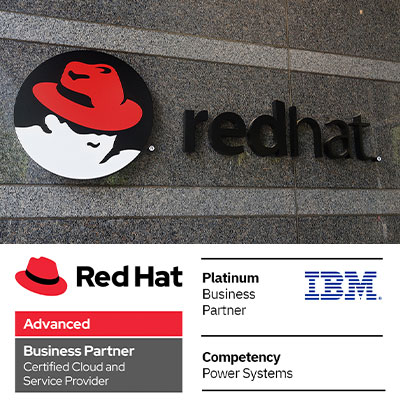
IBM Power
Modernising with IBM Power Systems and Red Hat
App modernisation reinforces a solution by adding new functionality to an existing environment without affecting the core codebase.
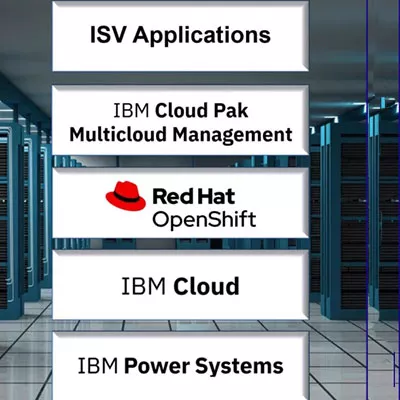
IBM Power
Workload Modernisation Solutions for IBM Power Systems
Hybrid cloud solutions for ISVs to modernise mission-critical, regulated applications and associated infrastructure.
Popular IBM Services
Ready to talk?
Get in touch today to discuss your IT challenges and goals. No matter what’s happening in your IT environment right now, discover how our experts can help your business discover its competitive edge.


